Congratulations to Our 2024 Fellows

Present Data with Confidence
Presenting a poster? Want to jazz up your slide deck? This workshop is for you! Get a solid introduction to properly visualize your data and activity to tell the story you want to tell.
Present Data with Confidence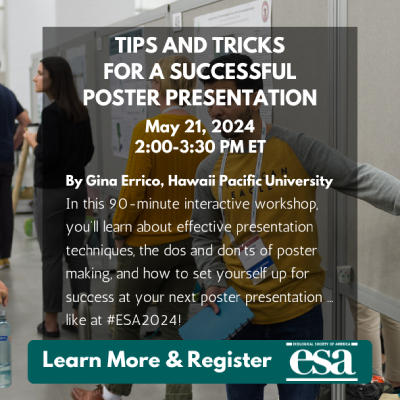
Elevate Your Poster Presentation
Keep those butterflies quiet whether it's your first poster or your 100th! This workshop will help you to iron out your presentation, tell a compelling story and have your visitors leave impressed.
Elevate Your Poster Presentation
Academic Jobs Roadmap
Empower yourself for an academic career! Over 7 sessions split between May and October (as a series or a la carte), dive into successful strategies for key points in the application & interview processes.
Academic Jobs RoadmapJournals & Publications
-
ESA's Journals & Publications
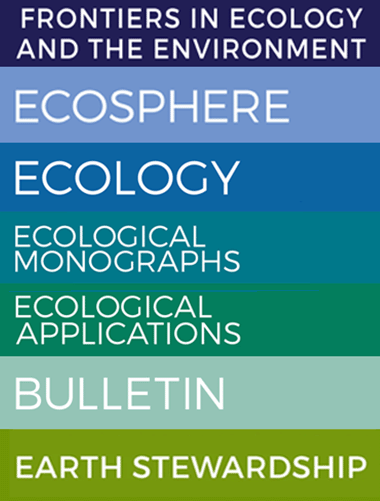
The Ecological Society of America has over 100 years of journal publishing history and offers some of the most widely read and cited journals in the field of ecology. The seven journals in our portfolio encompass a wide array of aims and scope of study, making them an important and accessible outlet for scientists, researchers, practitioners, professionals, citizen scientists, and others seeking to publish their work. The ESA staff provides editorial support with our publishing partner, John Wiley & Sons. Several discounts towards publication in the ESA journals are available from ESA and our publisher. We welcome your submissions.
-
Frontiers in Ecology and the Environment
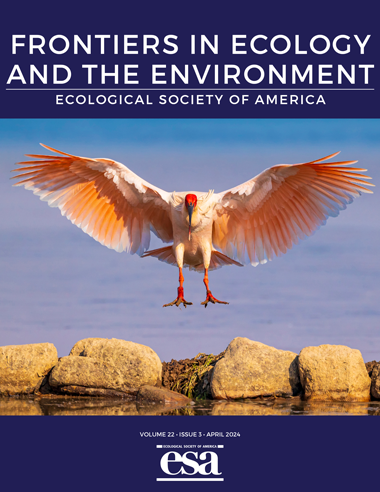
The IUCN Red List relies on various criteria, including range and population size, to assess the imperilment status of species such as the crested ibis (Nipponia nippon). However, the IUCN methodology notably excludes considerations of genetic variability and dispersal capacity. In the April issue of Frontiers, Chen et al. share an alternative framework—the life strategy index—which incorporates these missing elements into its assessment of extinction risk, which is especially important in the context of the biodiversity crisis and anthropogenic climate change. By accounting for a species’ evolutionary, ecological, and colonization potential, this new index may help to complement the widely adopted Red List.
-
Ecosphere
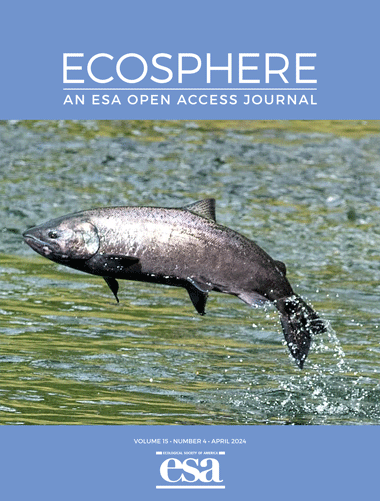
To determine the extent to which a large restoration effort in the 1990s altered the abundance and stability of the Butte Creek population of spring-run Chinook Salmon and of the entire spring-run stock complex in California's Central Valley, Cordoleani et al. compared annual trends before and after restoration and correlated adult abundance to floodplain inundation area. This research, published in the March issue of Ecosphere, underscores the importance of restoring a connected mosaic of aquatic habitats across modified landscapes, including cold-water refugia and floodplains, to preserve multiple (across-population) life history pathways for increasing salmon stock complex stability and abundance.
-
Ecology
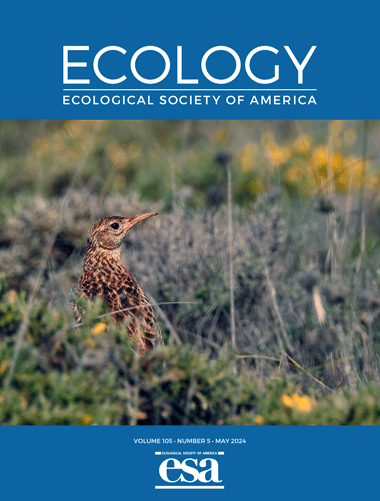
The photo on the cover of the May issue of Ecology shows a male Dupont's lark (Chersophilus duponti) cautiously navigating through the scrub steppes of Molina de Aragón, Spain, in June 2023. This threatened species coexists with other passerines in the Iberian steppes. Using data from this study area, Barrero et al.'s study in the May issue describes a low niche overlap in the whole community assemblage, although the degree of niche overlap varied between pairs of species. No effects of heterospecific density on species niche breadth was found; however, increasing conspecific density caused niche contraction in some species, contrary to predictions from competition theory.
-
Ecological Monographs
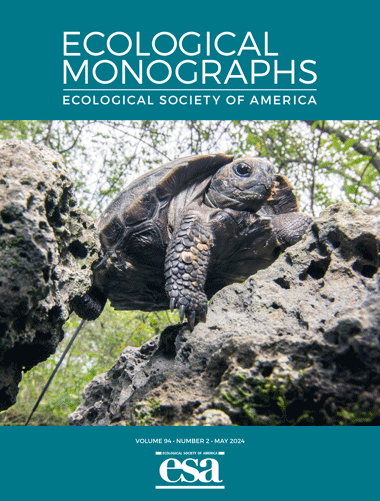
The photo on the cover of the May issue of Ecological Monographs illustrates the challenges faced by hatchling Galapagos tortoises as they disperse—often immense distances—from their nests in the aftermath of hatching. This Galapagos tortoise (Chelonoidis porteri) hatchling, named “Samuel” by Blake et al. and from their study published in the May issue, was radio-tagged in February 2013 when he weighed just 75 grams. Now 8 kilograms, Samuel is one of the few survivors from over 100 hatchlings followed over nine years to determine egg and hatchling survival and growth and female fecundity along elevation gradients on the Galapagos. While nine years provides a long period of ecological research, it may be less than 5% of Samuel's lifespan.
-
Ecological Applications
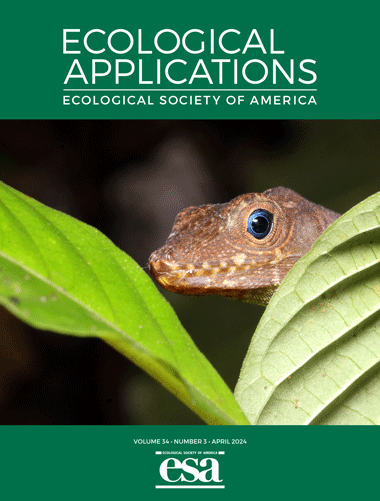
Anolis gundlachi is a shade specialist lizard endemic to Puerto Rico that inhabits old-growth forests and forests in earlier stages of succession if these provide the shaded conditions required for its physiological needs. Acevedo et al. studied the recolonization of secondary forests by this shade specialist through the lens of range expansion theory. They found differences in phenotypic traits, and lower densities and parasitism rates in younger forests when compared to matured forests as predicted by range expansion theory. Their study can be found in the April issue of Ecological Applications.
-
The Bulletin
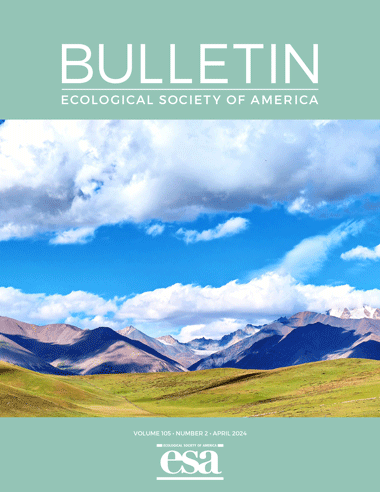
In the April issue of the ESA Bulletin, ESA President-Elect Stephanie E. Hampton and recent Past-Presidents Kathleen C. Weathers and Dennis S. Ojima summarize ESA's publishing portfolio and the benefits of publishing in ESA journals. Our journals are widely available and offer many discounts to authors thanks to our publishing partnerships, and publication in ESA journals provides ESA with opportunities to enrich our programs that support students, early career researchers, and underrepresented groups, and more.
-
Earth Stewardship
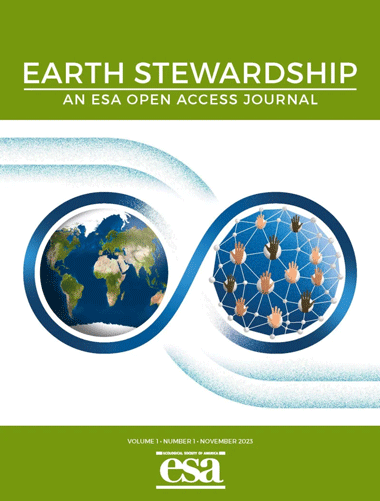
We are delighted to announce a call for submissions for the inaugural issue of Earth Stewardship. This exciting new Open Access journal, launched with our publishing partner, John Wiley & Sons, calls for a broad spectrum of scientifically and technologically innovative and groundbreaking contributions including cross-cultural perspectives from leading researchers, policymakers, traditional custodians of land and sea and indigenous communities. Earth Stewardship publishes applied and theoretical articles to promote a broad, intercultural, and participatory foundation for earth stewardship.
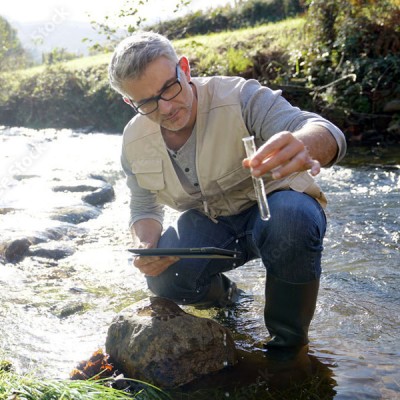
Professional Certification
Employers in all sectors value a credential that validates your skill as a professional. Learn more about ongoing changes to ESA certification and start your application today!
Professional Certification
Opportunity Fund Donations
Make a difference and fund programs which empower, educate and embolden both the current and next generation of scientists in the vast field of ecology.
Opportunity Fund Donations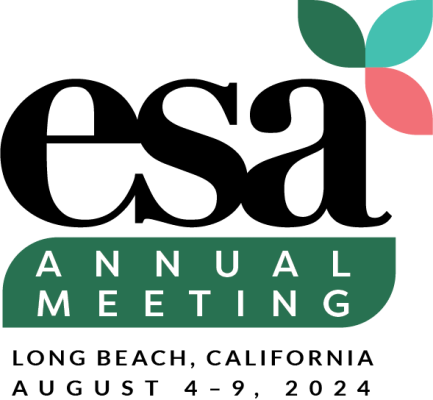
This Year's Meeting
The 2024 Annual Meeting will be held in Long Beach California. Select the following link and check out the theme, preliminary schedule, exhibitor opportunities and upcoming deadlines for proposals.
This Year's Meeting
Join Us for 2024
Only ESA members enjoy full access to our portfolio of leading journals, big discounts on professional programs and events, and opportunities to network in our international community of thousands.
Join Us for 2024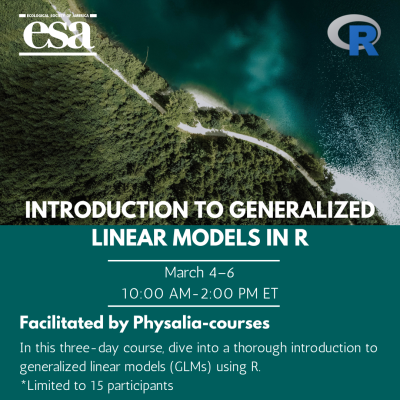
Generalized Linear Models in R
In this 3-day course from Physalia & ESA, dive into a thorough intro to GLM using R. Ideal for anyone interested in advanced statistical modeling! Just 2 spots remaining!
Generalized Linear Models in R
Improve Your Abstract
Before you submit your abstract for #ESA2024, make it the best it can be! We again present Bruce Kirchoff with tips to optimize your work, get it accepted and draw attention to your presentation.
Improve Your Abstract